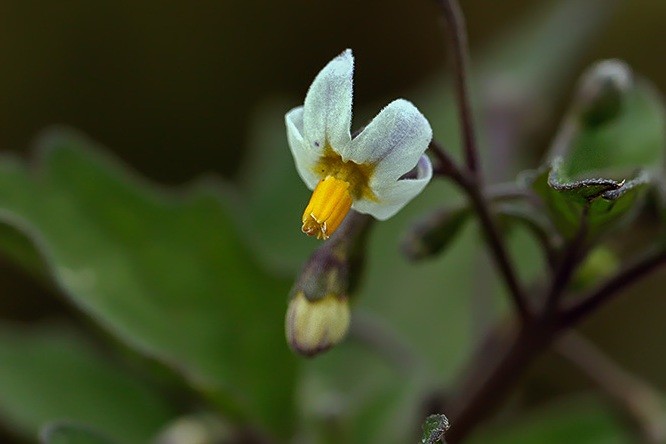Hoe nightshade
(Solanum physalifolium)

Description
Solanum physalifolium, known as hoe nightshade, Argentine nightshade, green nightshade and hairy nightshade, is a species in the family Solanaceae (the nightshade family). Native to Argentina, Bolivia and Chile, it is widely naturalized in Australia, New Zealand, Europe, western Canada and the north western United States. Solanum physalifolium has been widely but incorrectly known as Solanum sarrachoides, a different species. It has been listed as a noxious weed in the US states of Kansas and Michigan under this misapplied name. Two varieties have been recognized: Solanum physalifolium var. nitidibaccatum (Bitter) Edmonds, syn. S. nitidibaccatum Bitter Solanum physalifolium var. physalifolium Solanum physalifolium is an annual herbaceous plant growing from a taproot. It reaches a height of 10–90 cm (4–35 in). There are no leaves at the base of the stem. The leaves along the stem are ovoid to deltoid (egg-shaped to triangular), 2–8 cm (0.8–3.1 in) long by 1.5–5 cm (0.6–2.0 in) across. The leaf margins are variable and may be toothed, untoothed or wavy. Both the stems and leaves have soft hairs, often somewhat sticky. The flowers are arranged in small clusters and have white to pale blue petals, each 5–10 mm (0.2–0.4 in) wide with lobes that are angled outwards or backwards. The sepals form a cup around the fruit, which is a yellowish globular berry about 6–7 mm (0.2–0.3 in) in diameter. Solanum is a large and diverse genus of flowering plants, which include three food crops of high economic importance: the potato, the tomato and the eggplant (aubergine, brinjal). It also contains the nightshades and horse nettles, as well as numerous plants cultivated for their ornamental flowers and fruit. Solanum species show a wide range of growing habits, such as annuals and perennials, vines, subshrubs, shrubs, and small trees. Many formerly independent genera like Lycopersicon (the tomatoes) and Cyphomandra are now included in Solanum as subgenera or sections. Thus, the genus today contains roughly 1,500–2,000 species. The generic name was first used by Pliny the Elder (AD 23–79) for a plant also known as strychnos, most likely S. nigrum. Its derivation is uncertain, possibly stemming from the Latin word sol, meaning "sun", referring to its status as a plant of the sun. The species most commonly called nightshade in North America and Britain is Solanum dulcamara, also called bittersweet or woody nightshade.
Taxonomic tree:







